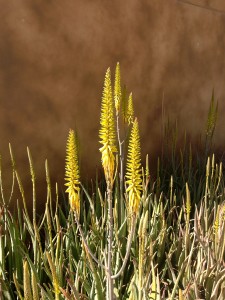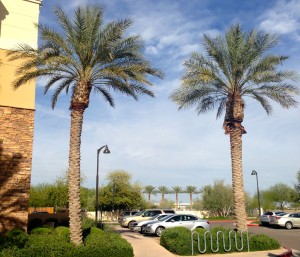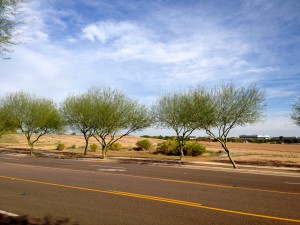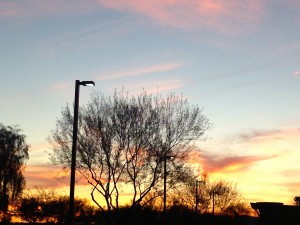Seattle Mariners Spring Training (the subject of last week’s blog) took the Handsome Bloke and I to Phoenix, Arizona. It was the second time I’d been to Arizona. The first time was when I was in middle school – a family trip with the cousins. We visited the Grand Canyon, though at the time we were too busy squabbling to notice much about the scenery. We weren’t there for an outdoor adventure. We were looking down from the South Rim while my grandfather took black and white sticky pictures with his Polaroid.
The Grand Canyon is in the northern part of the state, above Flagstaff. Phoenix is in the middle of the state. The two areas are vastly different. Flagstaff is on a mountain with mild weather conditions. Phoenix, the state capital, has a population above one million and a population growth rate of about 4 per cent annually. You might think it would feel crowded, but the city and its urban villages sprawl over flat land, merging with surrounding small towns. Phoenix residents call themselves Phoenicians — um, I’m wondering if that’s an insider joke, because the ancient Phoenicians were known for their seafaring skills.

Anyway, Phoenix has a subtropical desert climate — similar to Baghdad (or so I’ve read). I can tell you from personal experience, the humidity is extremely low and the sun, if you are unlucky enough to be sitting in it, is hot. And that’s before summer, when temperatures get into triple digits. The climate, of course, affects the type of plants used for landscaping. There were cacti. And also, to my surprise, quite a bit of purple and red bougainvillea. The bright color was a welcome respite from the overall color — tan.

Good grief! I’ve never seen so much tan. The ground is tan, the landscaping is tan, the exterior paint is tan (with occasional white). The indigenous plants seem to be a sort of light yellow green – which is not much of a contrast with tan. So, visually, the scene is one of flatness, emptiness, and tan. At least that’s how it looked in the Glendale area where we stayed.

These features were accented by very wide streets with wide traffic lanes. As the driver, I noticed the wide streets – some six to eight lanes wide at points. And also the huge intersections. You may find my response strange, but remember I live on an island. The Phoenix-Glendale area is also a place where most directions involve the freeway. And, unlike the freeways in Honolulu which often resemble parking lots, traffic on these freeways actually flows — at 65 miles per hour. A strangely exhilarating driving experience.

The two best things about our visit to Arizona were the people and the sunsets. In our entire short stay, we didn’t meet one unpleasant person. Everyone was friendly. And the sunsets were spectacular.
Photos by Author. All Rights Reserved.

Sandra Wagner-Wright holds the doctoral degree in history and taught women’s and global history at the University of Hawai`i. Sandra travels for her research, most recently to Salem, Massachusetts, the setting of her new Salem Stories series. She also enjoys traveling for new experiences. Recent trips include Antarctica and a river cruise on the Rhine from Amsterdam to Basel.
Sandra particularly likes writing about strong women who make a difference. She lives in Hilo, Hawai`i with her family and writes a blog relating to history, travel, and the idiosyncrasies of life.

